Have you ever thought back to when you were in fifth grade? What was the world like for you then? I remember when I was in fifth grade, and getting ready to go to Camp Hi-Hill, the Long Beach Unified School District’s Outdoor School (at the time) in the Angeles National Forest. I was excited and a bit nervous at first, but I had a great experience (and it was one of the reasons I chose to work in the field of Environmental and Outdoor Education).
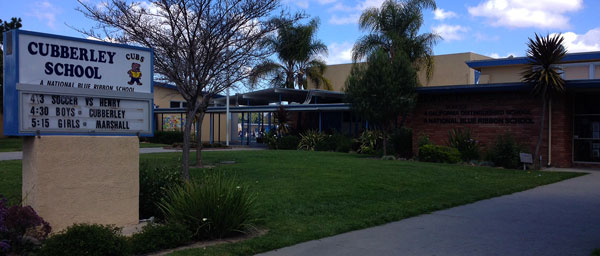
Here at High Trails, we have both fifth and sixth grade students come up for our program every week. As adults, working and living the National Forest, it can be easy to forget exactly what it feels like for our students coming up here for the first time. However, recently, I was able to take a trip down memory lane to my fifth grade classroom at Cubberely Elementary School in Long Beach, California and visit my fifth grade teacher, Ms. Ewert. I observed Ms. Ewert’s current fifth grade class at Cubberley to help me get a better sense of what students are experiencing in life nowadays and to get some new tips and tricks from Ms. Ewert to help me become a better teacher.
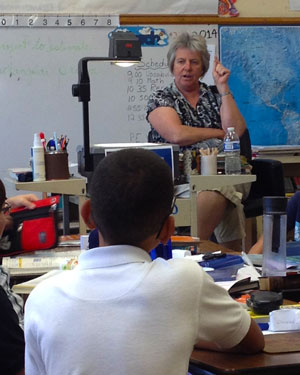 Currently, Ms. Ewert has a class of 35 fifth grade students. That’s a lot! Among her many classroom teaching years, she also spent seven years working in the field of Outdoor Education at Camp Hi-Hill. It was amazing to see how she integrated her outdoor education experience with her class. Besides having cool nature posters on the walls and animal skulls and pinecones on her shelves, she had her students go outside for some of her lessons. While doing projects, her students were allowed to work on the picnic benches or sit on the grass. Her students loved being outside to work, and it was great to see how a classroom in a school doesn’t have to be indoors; learning for students can happen anywhere.
Currently, Ms. Ewert has a class of 35 fifth grade students. That’s a lot! Among her many classroom teaching years, she also spent seven years working in the field of Outdoor Education at Camp Hi-Hill. It was amazing to see how she integrated her outdoor education experience with her class. Besides having cool nature posters on the walls and animal skulls and pinecones on her shelves, she had her students go outside for some of her lessons. While doing projects, her students were allowed to work on the picnic benches or sit on the grass. Her students loved being outside to work, and it was great to see how a classroom in a school doesn’t have to be indoors; learning for students can happen anywhere.
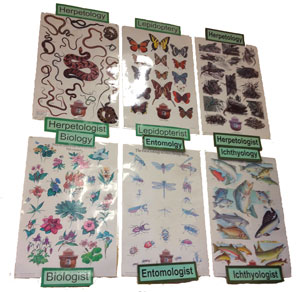 Another one of my observations of her classroom was the power of positive reinforcement. Ms. Ewert would individually praise students for their good behavior in class. She would constantly tell her students “Thank you for coming in quietly,” “Thank you for not visiting with your neighbors,” and “Thank you for getting out your book and reading when you finished your work”.
Another one of my observations of her classroom was the power of positive reinforcement. Ms. Ewert would individually praise students for their good behavior in class. She would constantly tell her students “Thank you for coming in quietly,” “Thank you for not visiting with your neighbors,” and “Thank you for getting out your book and reading when you finished your work”.
It was great to see how effective positive reinforcement can be on a class. They all responded once they heard other students getting praised, and her students would settle down much quicker when they were shown teacher approval.
I also noticed how she used callbacks to get her class’s attention. She would use clapping as a callback and also would say “Cubberley” and they would respond with “Cubs” every time and get silent afterwards.

Another inspiring component of Ms. Ewert’s class was how she would teach to all types of learners and use inquiry-based teaching techniques. When it was time for science in her class, she had students open up their books to a color diagram of the water cycle so they had a visual model to look at. She discussed with her students the different parts of the water cycle (and even let me guest teach and draw a diagram for her students while she was explaining).
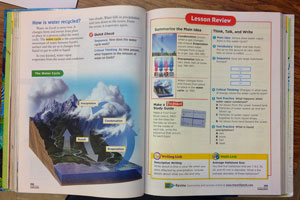 After using inquiry to check for understanding of her students, she had her students repeat different parts of the cycle, and explain to each other (in a think-pair-share manner) the water cycle to make sure that they understood. After their explanations, I was able to teach them water cycle tag, and they started a group project of drawing and recreating their own version of the water cycle on a poster board.
After using inquiry to check for understanding of her students, she had her students repeat different parts of the cycle, and explain to each other (in a think-pair-share manner) the water cycle to make sure that they understood. After their explanations, I was able to teach them water cycle tag, and they started a group project of drawing and recreating their own version of the water cycle on a poster board.
After they finished, she had groups use their creativity to practice and work on interactive water cycle skits that they were going to be presenting to the school in a week. It was great to see how interactive a classroom can be, and how with every subject taught (including volume during math), she had a way for all types of learners (audio, visual, and kinesthetic) to be able to thrive while learning.
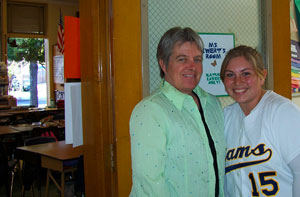 Overall, my observation was a great experience. I was able to remind myself of what our students experience in their daily routine at school and also socially with friends. Besides getting to reconnect with my fifth grade self and observe one of the greatest mentors I’ve had in my life, I think the best lesson that Ms. Ewert taught me during my observation was patience.
Overall, my observation was a great experience. I was able to remind myself of what our students experience in their daily routine at school and also socially with friends. Besides getting to reconnect with my fifth grade self and observe one of the greatest mentors I’ve had in my life, I think the best lesson that Ms. Ewert taught me during my observation was patience.
No matter how many questions she received about any subject, she always answered with a smile and didn’t seem to mind repeating herself multiple times for students. Her patience and positivity were great attributes to a fantastic learning environment for her students. I can’t wait to try out some of these magnificient methods I observed in my outside classroom in the San Bernardino National Forest!

At High Trails Outdoor Science School, we literally force our instructors to write about elementary outdoor education, teaching outside, learning outside, our dirty classroom (the forest…gosh), environmental science, outdoor science, and all other tree hugging student and kid loving things that keep us engaged, passionate, driven, loving our job, digging our life, and spreading the word to anyone whose attention we can hold for long enough to actually make it through reading this entire sentence. Whew…. www.dirtyclassroom.com

Comments are closed.